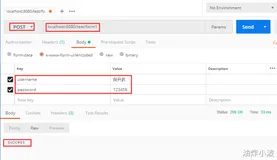然后在application.xml里面配置
<?xml version="1.0" encoding="UTF-8"?> <beans xmlns="http://www.springframework.org/schema/beans" xmlns:xsi="http://www.w3.org/2001/XMLSchema-instance" xmlns:tx="http://www.springframework.org/schema/tx" xmlns:aop="http://www.springframework.org/schema/aop" xmlns:context="http://www.springframework.org/schema/context" xmlns:mvc="http://www.springframework.org/schema/mvc" xmlns:task="http://www.springframework.org/schema/task" xsi:schemaLocation="http://www.springframework.org/schema/beans http://www.springframework.org/schema/beans/spring-beans.xsd http://www.springframework.org/schema/tx http://www.springframework.org/schema/tx/spring-tx.xsd http://www.springframework.org/schema/aop http://www.springframework.org/schema/aop/spring-aop.xsd http://www.springframework.org/schema/mvc http://www.springframework.org/schema/mvc/spring-mvc.xsd http://www.springframework.org/schema/context http://www.springframework.org/schema/context/spring-context.xsd http://www.springframework.org/schema/task http://www.springframework.org/schema/task/spring-task.xsd"> <!-- 自动扫描的包名 --> <context:component-scan base-package="com.shishuo.studio"></context:component-scan> <mvc:annotation-driven /> <task:annotation-driven /> <tx:annotation-driven /> <bean class="org.springframework.web.servlet.mvc.annotation.AnnotationMethodHandlerAdapter" /> <bean class="org.springframework.web.servlet.mvc.annotation.DefaultAnnotationHandlerMapping" /> <mvc:interceptors> <mvc:interceptor> <mvc:mapping path="/**" /> <bean class="com.shishuo.studio.filter.GlobalInterceptor"></bean> </mvc:interceptor> <mvc:interceptor> <mvc:mapping path="/auth/**" /> <bean class="com.shishuo.studio.filter.AuthInterceptor"></bean> </mvc:interceptor> <mvc:interceptor> <mvc:mapping path="/auth/studio/**" /> <bean class="com.shishuo.studio.filter.StudioInterceptor"></bean> </mvc:interceptor> </mvc:interceptors> <!-- 在XML配置文件中加入外部属性文件,当然也可以指定外部文件的编码 --> <bean id="propertyConfigurer" class="com.shishuo.studio.util.PropertyUtils"> <property name="locations"> <list> <value>classpath:shishuo.studio.properties</value> <!-- 指定外部文件的编码 --> </list> </property> </bean> <!-- FreeMarker的配置 --> <bean id="freeMarkerConfigurer" class="org.springframework.web.servlet.view.freemarker.FreeMarkerConfigurer"> <property name="templateLoaderPath" value="/WEB-INF/ftl" /><!-- 指定路径 --> <property name="defaultEncoding" value="UTF-8" /><!-- 指定编码格式 --> <property name="freemarkerSettings"> <props> <prop key="template_update_delay">10</prop> <prop key="defaultEncoding">UTF-8</prop> <prop key="url_escaping_charset">UTF-8</prop> <prop key="locale">zh_CN</prop> <prop key="boolean_format">true,false</prop> <prop key="time_format">HH:mm:ss</prop> <prop key="datetime_format">yyyy-MM-dd HH:mm:ss</prop> <prop key="date_format">yyyy-MM-dd</prop> <prop key="number_format">#.##</prop> <prop key="whitespace_stripping">true</prop> <prop key="classic_compatible">true</prop> </props> </property> </bean> <!-- 配置 FreeMarker视图解析器 --> <bean id="viewResolver" class="org.springframework.web.servlet.view.freemarker.FreeMarkerViewResolver"> <property name="viewClass" value="org.springframework.web.servlet.view.freemarker.FreeMarkerView"></property> <property name="cache" value="false" /> <property name="prefix" value="/" /> <property name="suffix" value=".ftl" /><!--可为空,方便实现自已的依据扩展名来选择视图解释类的逻辑 --> <property name="contentType" value="text/html;charset=utf-8" /> <property name="exposeRequestAttributes" value="true" /> <property name="exposeSessionAttributes" value="true" /> <property name="exposeSpringMacroHelpers" value="true" /> </bean> </beans>
@Component,@Service,@Controller,@Repository注解的类,并把这些类纳入进spring容器中管理。它的作用和在xml文件中使用bean节点配置组件时一样的。
@Component Component是Spring管理组件的通用形式,而@repository,@Service,@Controller是它的细化。分别表示更加具体的用例(分别对应持久化层,服务层和表现层)
B、按照Class路径扫描
XML风格的配置方式,我们会在配置文件中配置大量的bean,这样但项目足够大时,那么这个配置文件将过于庞大而不便管理。而应用@注释的配置方式,我们在类中用@Component等注释类,并让容器按照Classpath自动扫描管理它们。要实现以上功能我们需要这样定义。
<?xml version="1.0" encoding="UTF-8"?>
<beans xmlns="http://www.springframework.org/schema/beans"
xmlns:xsi="http://www.w3.org/2001/XMLSchema-instance" xmlns:context="http://www.springframework.org/schema/context"
xsi:schemaLocation="http://www.springframework.org/schema/beans
http://www.springframework.org/schema/beans/spring-beans-3.0.xsd
http://www.springframework.org/schema/context
http://www.springframework.org/schema/context/spring-context-3.0.xsd">
<context:component-scan base-package="org.example" />
</beans>
在使用组件扫描时,AutowiredAnnotationBeanPostProcessor和CommonAnnotationBeanPostProcessor也将隐式包含进来,也就是说它支持@Autowired等,不需要我们如用<context:annotation-config/>再做声明了。。
自动扫描包名的配置 <context:component-scan base-package="com.shishuo"></context>
当我们用spring mvc 前端控制器的时候需要配置
<!-- spring mvc 基于注解在方法上 控制映射 配置 -->
<bean
class="org.springframework.web.servlet.mvc.annotation.AnnotationMethodHandlerAdapter" />
<bean
class="org.springframework.web.servlet.mvc.annotation.DefaultAnnotationHandlerMapping">
</bean>
<!-- 在XML配置文件中加入外部属性文件,当然也可以指定外部文件的编码 -->
<bean id="propertyConfigurer"
class="org.springframework.beans.factory.config.PropertyPlaceholderConfigurer">
<property name="locations">
<list>
<value>classpath:shishuocms.properties</value> <!-- 指定外部文件的编码 -->
</list>
</property>
</bean>
<!-- 配置 FreeMarker视图解析器 -->
<bean id="viewResolver"
class="org.springframework.web.servlet.view.freemarker.FreeMarkerViewResolver">
<property name="viewClass"
value="org.springframework.web.servlet.view.freemarker.FreeMarkerView"></property>
<property name="cache" value="false" />
<property name="prefix" value="/" />
<property name="suffix" value=".ftl" /><!--可为空,方便实现自已的依据扩展名来选择视图解释类的逻辑 -->
<property name="contentType" value="text/html;charset=utf-8" />
<property name="exposeRequestAttributes" value="true" />
<property name="exposeSessionAttributes" value="true" />
<property name="exposeSpringMacroHelpers" value="true" />
</bean>
<!--创建数据映射器,数据映射器必须为接口 -->
<bean class="org.mybatis.spring.mapper.MapperScannerConfigurer">
<property name="annotationClass" value="org.springframework.stereotype.Repository" />
<property name="basePackage" value="com.shishuo.cms.dao" />
</bean>
spring mvc 拦截器
拦截器在application.xml配置
<mvc:interceptors>
<mvc:interceptor>
<mvc:mapping path="/**" />
<bean class="com.shishuo.cms.filter.GlobalInterceptor"></bean>
</mvc:interceptor>
</mvc:interceptors>
怎么使用RequestMapping的参数 主要有RequestParam Pathvariable(这个注解是获取url里面的参数)
5.1.1、常见应用场景
1、日志记录:记录请求信息的日志,以便进行信息监控、信息统计、计算PV(Page View)等。
2、权限检查:如登录检测,进入处理器检测检测是否登录,如果没有直接返回到登录页面;
3、性能监控:有时候系统在某段时间莫名其妙的慢,可以通过拦截器在进入处理器之前记录开始时间,在处理完后记录结束时间,从而得到该请求的处理时间(如果有反向代理,如apache可以自动记录);
4、通用行为:读取cookie得到用户信息并将用户对象放入请求,从而方便后续流程使用,还有如提取Locale、Theme信息等,只要是多个处理器都需要的即可使用拦截器实现。
5、OpenSessionInView:如Hibernate,在进入处理器打开Session,在完成后关闭Session。
…………本质也是AOP(面向切面编程),也就是说符合横切关注点的所有功能都可以放入拦截器实现。
MySQL server version for the right syntax to use near where userId=28 at line 1
这个错误是在写修改语句的时候 where 前面多加了一个逗号
syntax error 是语法错误
Could not resolve view with name 'auth/teacher/skill/update' in servlet with是自己没有加@Responsebody 用spring mvc 的时候返回是json 一定要记得写@Responsebody
当需要上传一个form里面包含 文件 或者视屏的时候 一定要记得在form表单后面添加 enctype="multipart/form-data" enctype="multipart/form-data"
@RequestParam @RequestBody @PathVariable 等参数绑定注解详解
分类: spring 2012-09-21 16:22 11494人阅读 评论(4) 收藏 举报
目录(?)[+]
引言:
接上一篇文章,对@RequestMapping进行地址映射讲解之后,该篇主要讲解request 数据到handler method 参数数据的绑定所用到的注解和什么情形下使用;
简介:
handler method 参数绑定常用的注解,我们根据他们处理的Request的不同内容部分分为四类:(主要讲解常用类型)
A、处理requet uri 部分(这里指uri template中variable,不含queryString部分)的注解: @PathVariable;
B、处理request header部分的注解: @RequestHeader, @CookieValue;
C、处理request body部分的注解:@RequestParam, @RequestBody;
D、处理attribute类型是注解: @SessionAttributes, @ModelAttribute;

